Parlez-vous Starrett?
Did Vincent Starrett have a following in France? Oui, madame, he did.
It's clear that Vincent Starrett's mysteries had a strong following in the United States during the 1920s and '30s. It was a bit surprising to learn that some of Starrett's books were translated into French and published in the 1930s and 40s in Paris.
Redbook magazine for November 1934 featuring Recipe for Murder by Starrett, later renamed The Great Hotel Murder for book publication.
While reading through the OCLC WorldCat listing on Starrett one rainy evening (Doesn’t everyone?), I ran across citations for two French editions of Starrett’s novel published in America as The Great Hotel Murder. It took a bit, but I was able to run down copies of both from booksellers in Paris.
Before we get to the French editions, let's look at the American publication history.
The Great Hotel Murder was first published in Redbook magazine as "Recipe for Murder" in the November 1934 issue. It was, so far as I can tell, the only time the popular women’s magazine published a Starrett story.
"This time I hit the jackpot—a smallish jackpot—for I managed to sell the novel three times, as a serial, as a book, ans as a motion picture," recalled Starrett in his memoir, Born in a Bookshop.

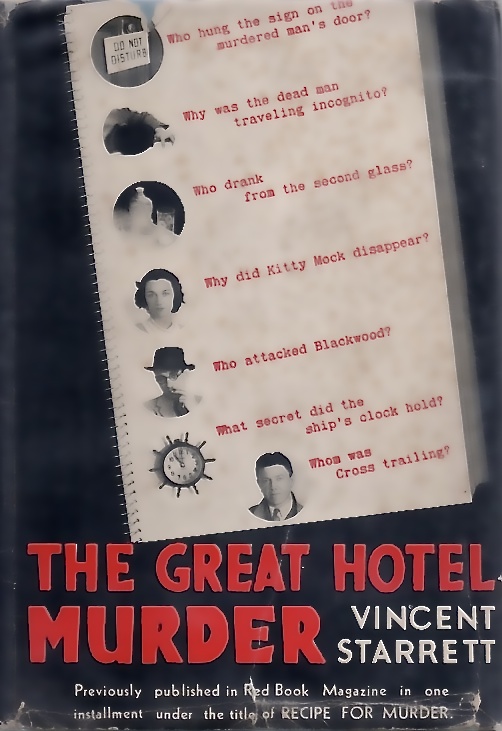
The first book publication for The Great Hotel Murder came in an edition by the Sun Dial Press of Garden City, New York in 1937. The dustjacket has a great design familiar from the period, with its cast of characters and questions that tease the key conundrums to be unraveled by theater critic and amateur detective Riley Blackwood. (Blackwood was also the detective in another of Starrett’s novels, Midnight and Percy Jones.)
An inside blurb was equally evocative of the time: “A man murdered in a Chicago hotel room … a case not solved until a ship’s clock tolled six bells off the Wisconsin coast of Lake Superior.” The American edition was popular enough to spark a second edition two years later under the Caxton Press imprint, with almost the exact same dustjacket.
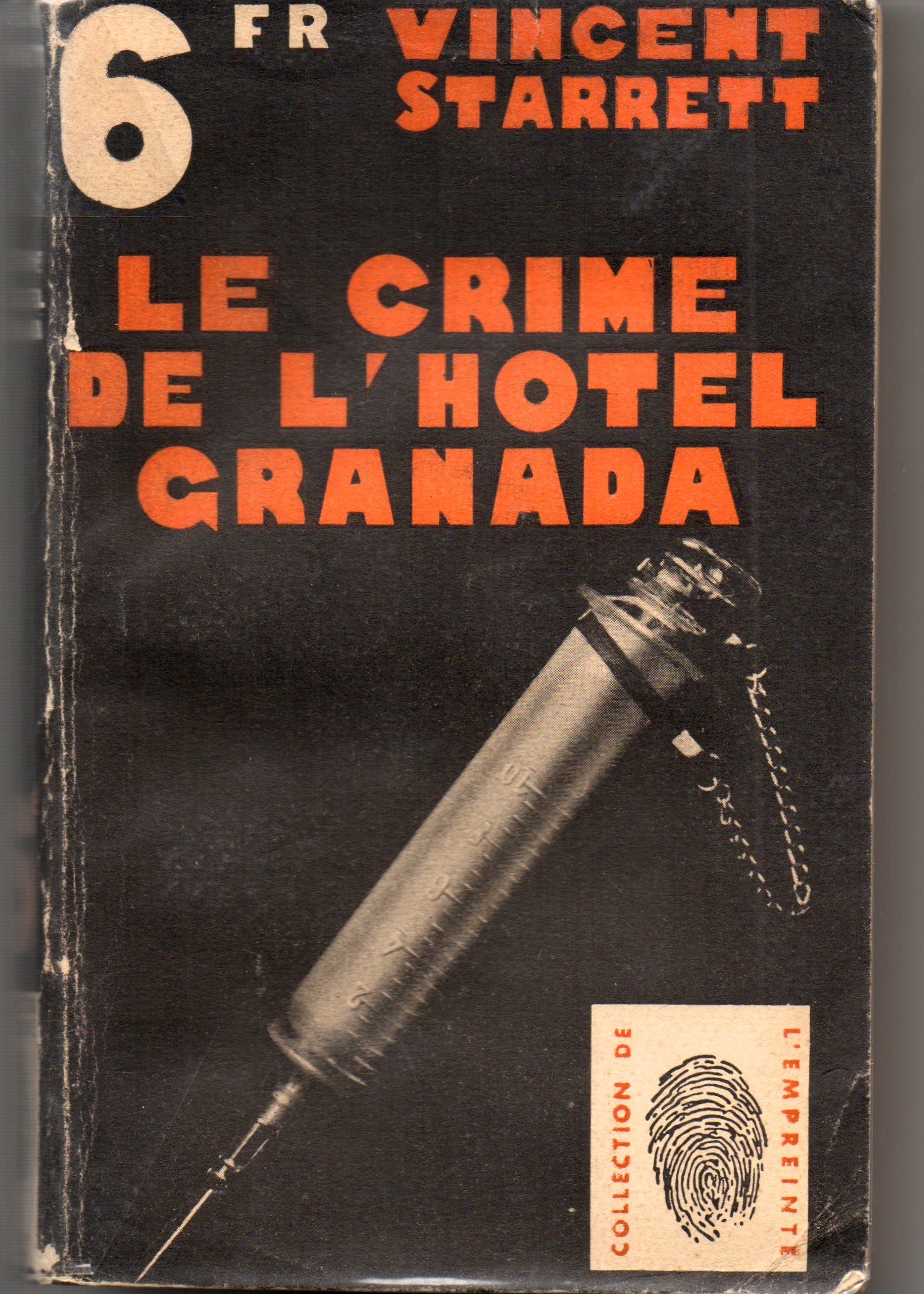
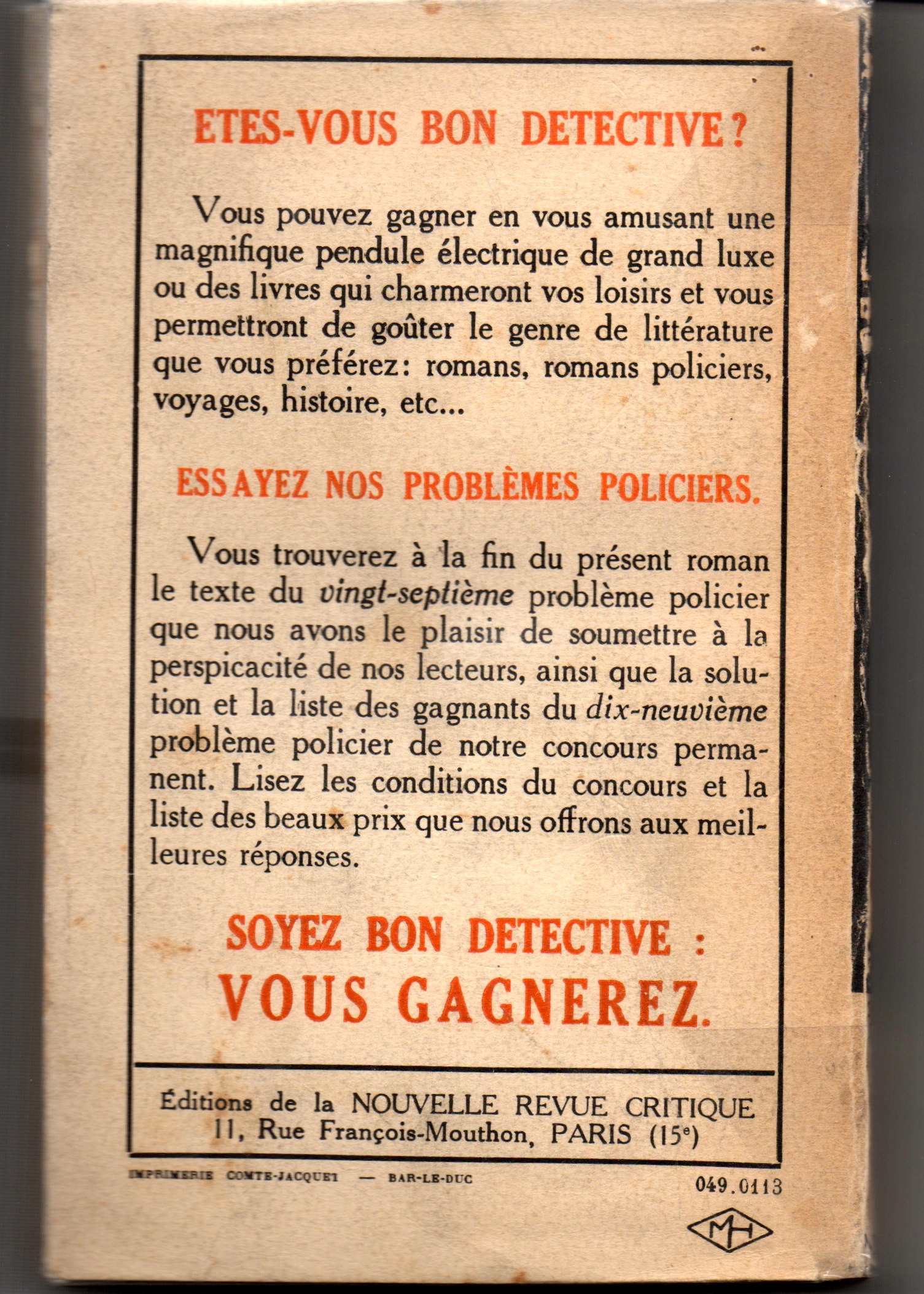
Even as the American edition was being printed, there was also a French edition issued with a much different feel. The French edition shows the influence of that nation’s interest in roman noir novels from the hardboiled school of writers. Reflecting this trend, both French editions are paperbacks with lurid covers.
Le Crime De L’Hotel Granada was translated into French by Simone Lechevrel and published as No. 113 in a series of mysteries by the Nouvelle Revue Critique at 11 Rue Francois-Mouthon, Paris. (Lechevrel was a popular translator of the period, taking on books by such well-known English language writers as Ellery Queen and Eric Ambler.)
The series included translations of stories by such popular international writers as Earl derr Biggers (creator of Charlie Chan), Ellery Queen, R. Austin Freeman, Nicholas Blake and John Dickson Carr (writing under Carter Dickson).
The large metallic syringe on the cover suggests a lurid tale of drugs and death, rather than the cerebral puzzle in the American editions. (Embarrassing admission: I can’t read French, so can’t comment on the quality of this or other translations. Je m'excuse.)
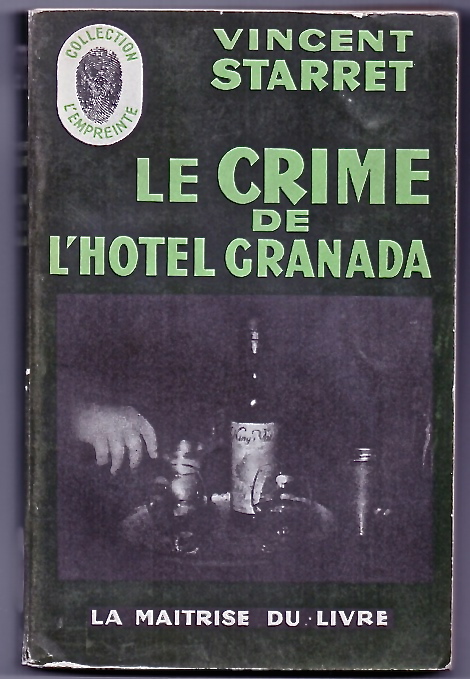
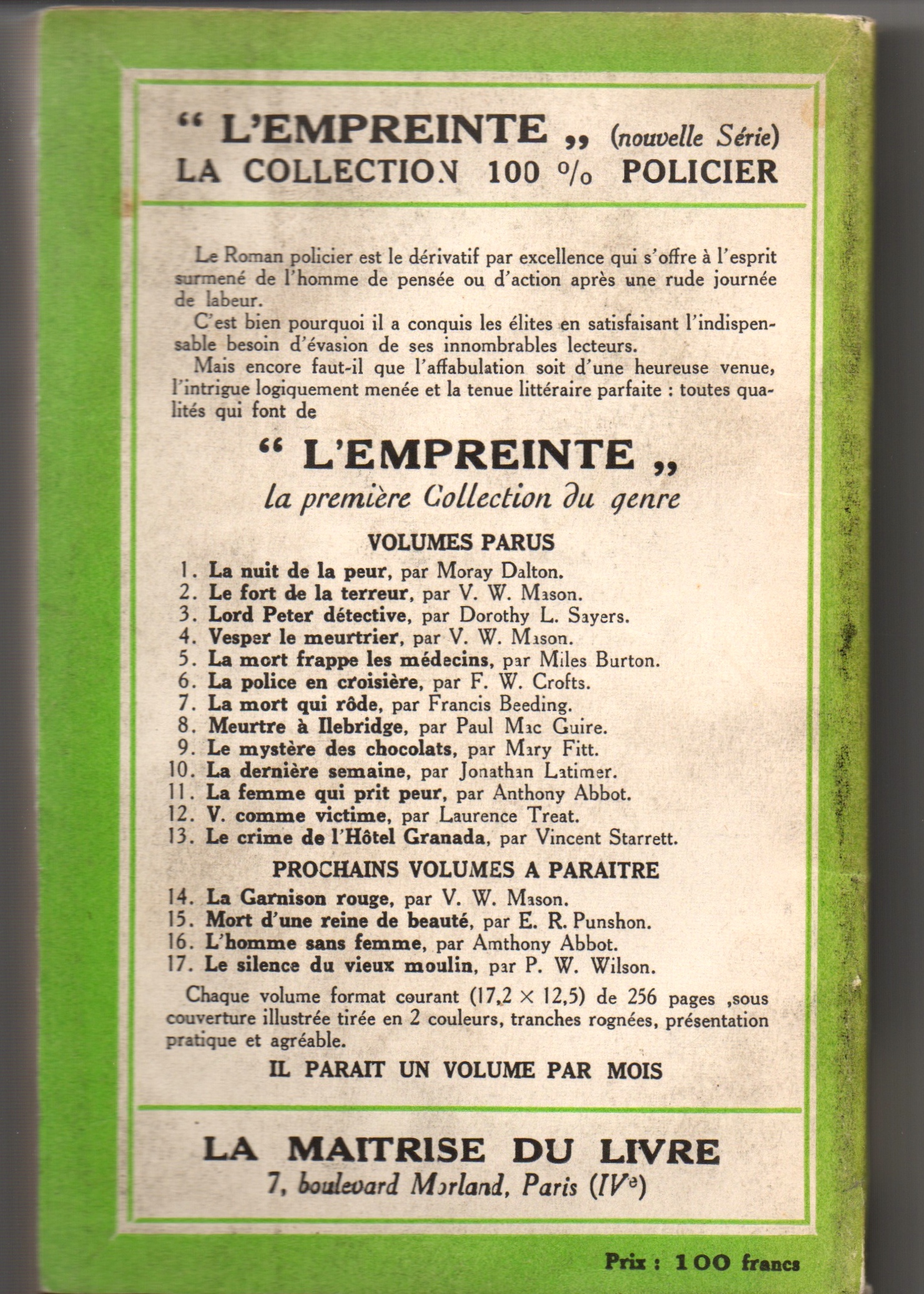
Ten years later, the novel was republished by La Maitrise Du Livre at 7 boulevard Morland, Paris. Again, it was part of a series of mystery paperbacks, but with the exception of Dorothy Sayers, the authors in the second series are less well known in this country today.
Once again, the cover offers a noir scene, with a shadowy hand reaching towards a tray of drinks that suggests poison is on its way.
At least in this point, the front cover illustration is relates to the story.
The back cover remarks that the detective story is the "perfect distraction" offering an exciting mystery to be read and enjoyed.
Known as The Laughing Buddha during an earlier paperback publication in 1937, this is the first edition of the hardback Murder in Peking.
Le Crime De L’Hotel Granada must have done well enough for there to be interest in what would turn out to be Starrett’s last mystery novel, Murder in Peking.
The book has a long and curious publication history in this country, which is a story for another day. Originally published in a paperback edition in 1937 under the title The Laughing Buddha, an American hardcover edition by the Lantern Press appeared in 1946 with its new title Murder in Peking.
(Note that the DJ makes the common error of misspelling the name Jimmie Lavender as Jimmy Lavender.)
Why revive the book almost 10 years after its initial publication? I suspect the Chinese Civil War of the 1940s created a new interest in the mystery here and around the world. There were also editions published in England and in Australia. (So far as I can tell, this was the only book of Starrett's to have a native Australian publication.)
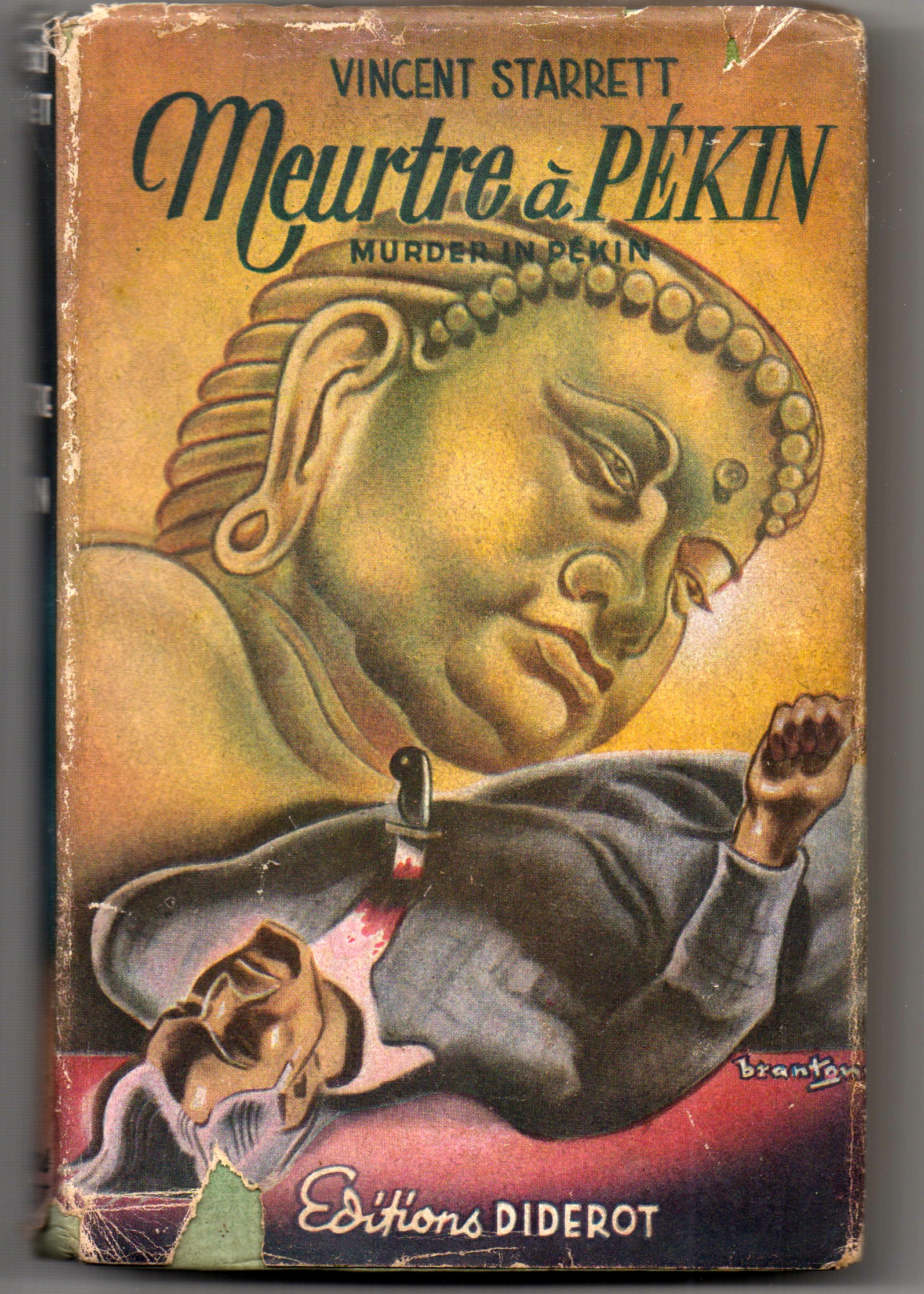
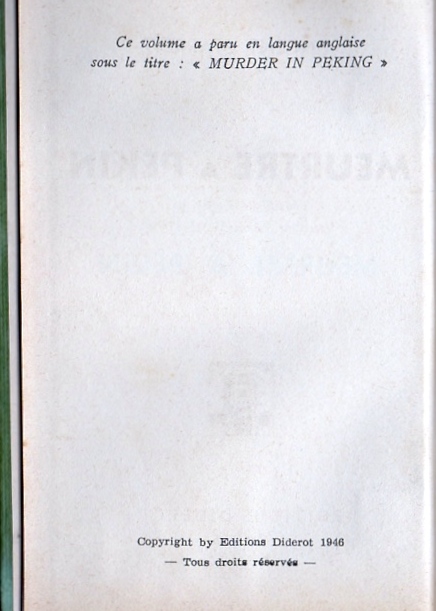
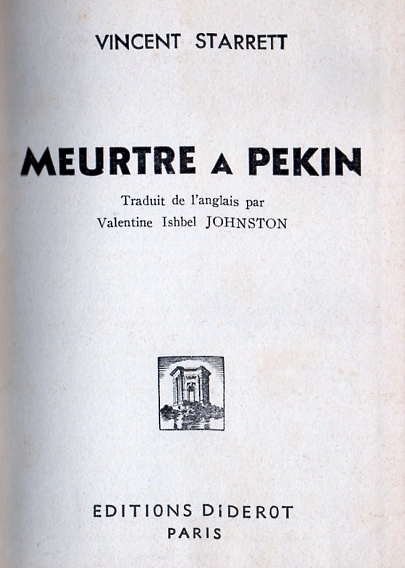
Just a few months after being released in the United States, Meurtre a Pékin appeared in a translation by Valentine Ishbel Johnston under the Editions Diderot imprint from Paris. This is a small hardback book, with a marvelous dust jacket signed by an artist known only as “branton”. Once again, this novel is part of series of mysteries, but the other authors are largely Europeans: Henri Bauche, Maurice Senard and Yves Dermeze.
This is an awesome dust jacket. Even with the chips and wrinkles, you get a sense that when it was new, its colors popped and the artwork would have made it hard to ignore on a store shelf. Take a moment to compare the French and U.S. editions and you get a good sense of what was acceptable imagery at the time in the publishing world.
The image of the dead man in the French dj is not one you would have seen in an American publication of the time. The bloody knife sticking out of his chest is unusually graphic. Indeed, the American edition has a few blood spots as the only hint to a murder. And I don’t know why, but the raised right arm in the French image is especially creepy. I also find it curious to note that the version of Buddha, which is almost spectral in the American edition, is far more realistic in the French.
Before moving on to the last example, I wanted to note that I lack a copy of one of Starrett’s books that was translated into French in 1934. Dead Man Inside became Ici, un Mort in the French edition translated by Perrine Vernay and published by Nouvelle Revue Critique at 11 Rue Francois-Mouthon, Paris. It was No. 21 in its series of mysteries. You’ll recall this as the same publisher who did the French edition of The Great Hotel Murder a few years later.
(If anyone knows where I can obtain a good French edition of Ici, un Mort, please let me know.)


Onto the final item: The Saint Mystery Magazine was launched as The Saint Detective Magazine in 1953 and continued through 1967. Like its more popular cousin, Ellery Queen’s Mystery Magazine, the monthly was an anthology featuring new and reprinted material. The Saint Mystery Magazine often featured Leslie Charteris’ suave Robin Hood-like hero The Saint, aka Simon Templar. There were British and Australian editions, but there was also a French edition that, like its American cousin, ran until 1967.
Starrett appeared in both the American and French editions. Here are examples, featuring the same story, “The Day of the Cripples.” The story features Starrett’s most successful detective, Jimmie Lavender, and is noteworthy because it is one of the few pieces of fiction Starrett wrote in the 1950s.
So that's the story of Vincent Starrett among the French, although it's unlikely this is the full story. As is always true with Starrett, there are likely to be more French translations of his work out there.
But for now, La fin.

